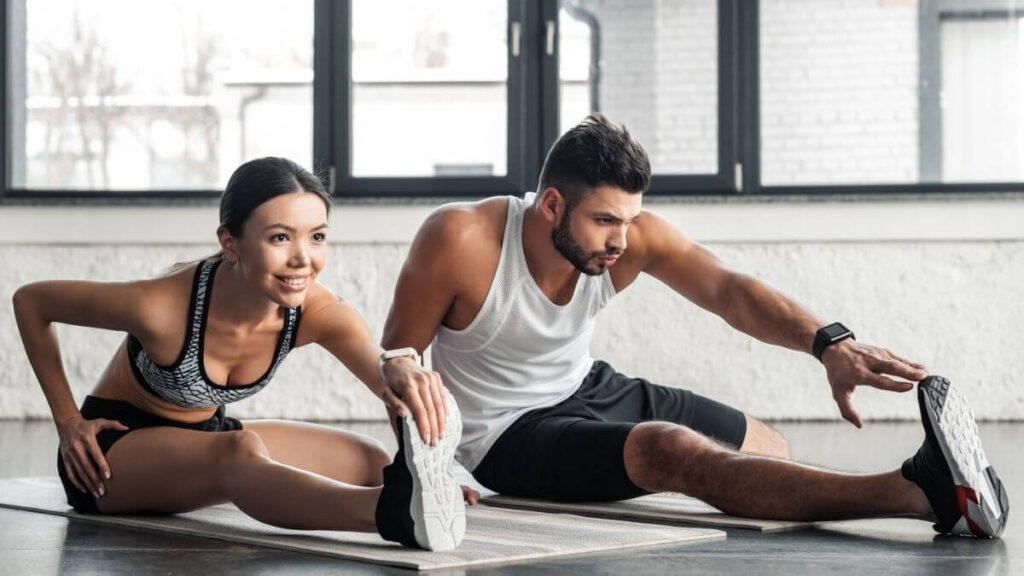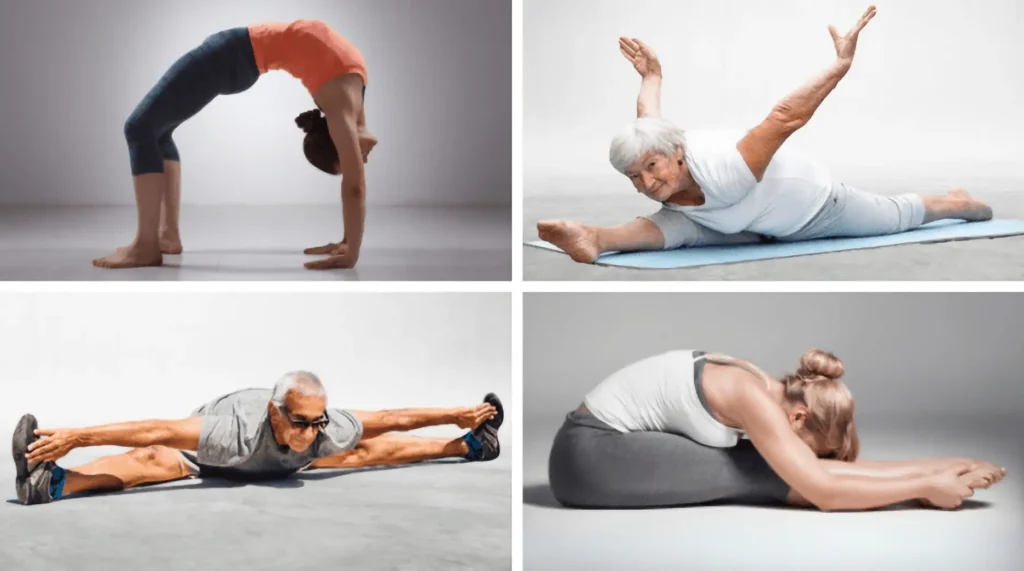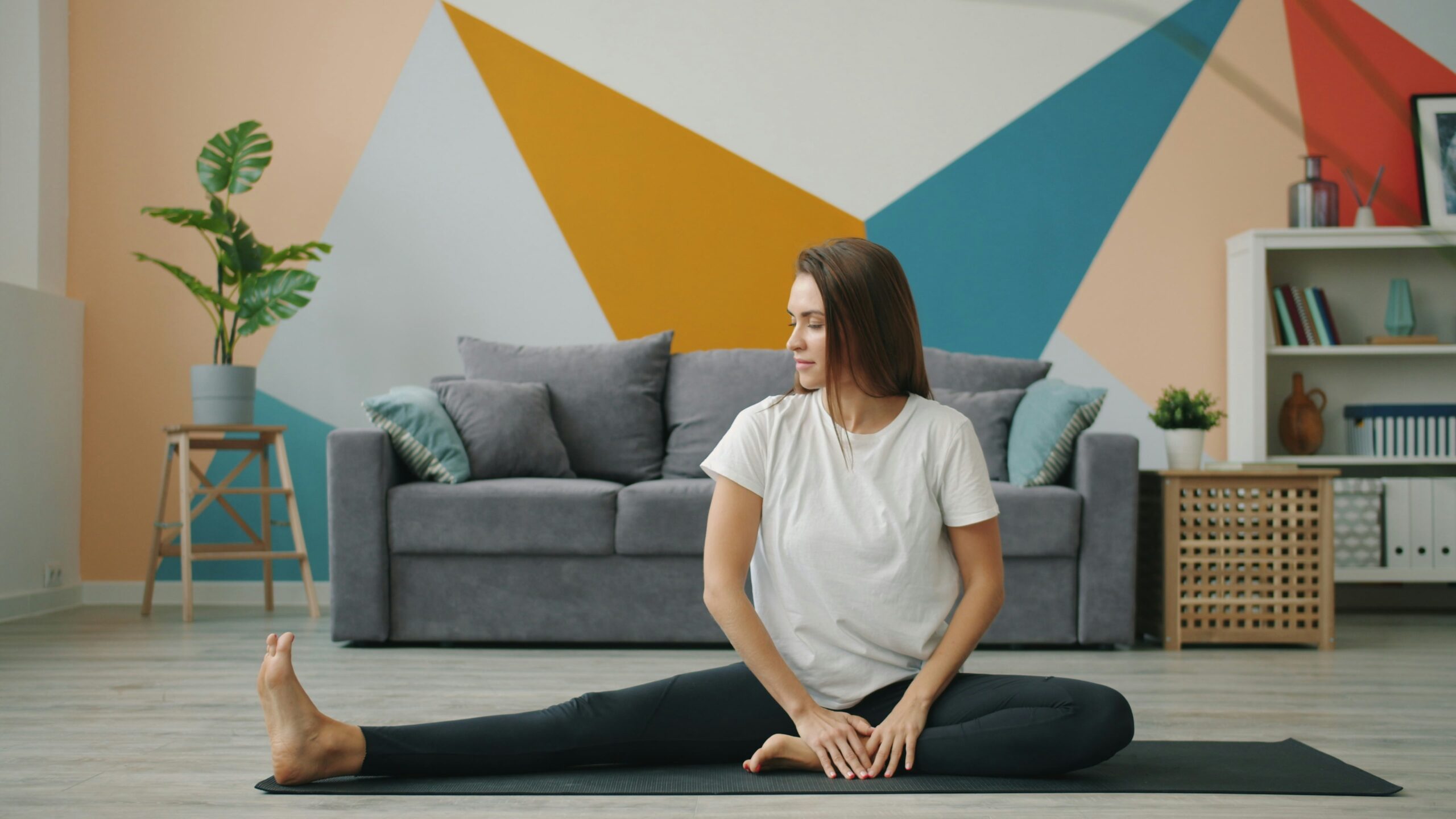When back pain hits, it’s tempting to reach for that painkiller bottle. After all, it promises instant relief and zero effort. But here’s the catch — painkillers act like a short-term patch on a leaky bucket. They don’t fix the real problem; they just muffle it for a while. Stretching, on the other hand, doesn’t just silence the pain — it teaches your body how to stop creating it in the first place. That’s the real magic of movement.

💊 Painkillers: The Quick Fix That Fools You
Painkillers are like that friend who always tells you what you want to hear, not what you need to hear. Sure, they offer fast comfort, but they also trick your body into thinking everything is fine when it’s really not. If your hips are tight or your lower back muscles are overworked, a pill won’t release that tension. It just masks it.
Many people take painkillers daily for stiffness and soreness, especially around the hips and spine. But here’s the problem — the moment the drug wears off, the pain is right back, sometimes even worse than before. Your muscles haven’t healed; they’ve just been silenced temporarily. It’s like muting an alarm instead of putting out the fire.
Stretching, especially targeted hip and lower back pain stretches, does the exact opposite. It gently wakes up your muscles, improves circulation, and helps your joints move freely again. Instead of covering up the discomfort, stretching tells your body, “Hey, let’s fix this together.” Click here to get the details
🧘♂️ Stretching: The Body’s Built-In Painkiller
Your body is smarter than you think. It already has a natural pain relief system — movement. When you stretch, you release tension that builds up from sitting, slouching, or even stress. Tight hips pull on your lower back, making it ache more. Gentle stretches loosen those muscles, realign your posture, and reduce the strain on your spine.
One of the greatest things about stretching is how accessible it is. You don’t need a prescription, insurance approval, or fancy equipment. Just a little space, some consistency, and the willingness to breathe through the discomfort. The best part? No side effects, no dependency, and definitely no “do not operate heavy machinery” warning.
Dynamic stretching also boosts blood flow, sending oxygen and nutrients to tired muscles. It’s like giving your body a mini massage every day. Over time, this routine reduces inflammation — the main cause of chronic pain — in a natural, lasting way. So while painkillers only stop the signals of pain, stretching actually stops the source of pain.
Regular hip and lower back pain stretches also help prevent future flare-ups. Once your muscles become flexible and strong, everyday movements — bending, walking, even dancing — feel smoother and lighter. You start to notice your body responding with gratitude instead of groans.
⚡ The Long-Term Benefits Pills Can’t Match
Painkillers might win the short-term battle, but stretching wins the long-term war. Pills can’t strengthen your core or correct your posture. They don’t improve mobility or balance. But stretching does all that and more.
Let’s face it — when you rely on painkillers, you’re outsourcing your healing. But when you stretch, you become the healer. You learn which areas of your body need love, and you give it to them intentionally. That self-awareness builds confidence, patience, and resilience — three things no pill can provide.
Over time, people who stretch regularly report more energy, better sleep, and fewer mood swings. That’s because stretching reduces stress hormones and releases endorphins — your body’s natural “feel-good” chemicals. Imagine starting your day with a few simple hip openers and back stretches instead of swallowing another pill. Your mind clears, your muscles relax, and your body feels alive again.
Plus, stretching is free. You can do it anytime, anywhere — before work, after a walk, or even during Netflix commercials. Unlike medication, your body doesn’t build tolerance to stretching. In fact, it gets better the more you do it.
🌿 Healing the Natural Way
The next time your back starts nagging you, skip the pill bottle and roll out a yoga mat instead. Start slow, breathe deeply, and focus on gentle movements that open your hips and lengthen your spine. The goal isn’t perfection — it’s progress.

By making stretching part of your daily life, you’re not just easing pain; you’re rewiring how your body handles it. Those few minutes of mindful movement can do more for your long-term health than years of pill-popping. You’ll feel lighter, looser, and surprisingly stronger.
So, if you’ve been searching for the best hip and lower back pain stretches, don’t wait for a doctor’s note — your body already knows what to do. Stretching is your built-in, side-effect-free painkiller. And the more you practice it, the more your body will thank you — every single day. Click here to start today
🕒 A 10-Minute Daily Mobility Plan
Let’s be honest — when you hear the word “stretching,” it’s easy to imagine complicated yoga poses or a 45-minute class with soothing music and impossible flexibility. But the truth is, you don’t need to be an athlete, gymnast, or yogi to reap the benefits of stretching. All you need is ten minutes a day, a little bit of consistency, and maybe a chair or mat. That’s it.
The best part? You can fit this routine into your schedule no matter how busy you are. Ten minutes is shorter than your average coffee break or social media scroll session. And once you start, you’ll realize just how powerful those few minutes can be for your hips, back, and overall comfort.
🌅 Morning Wake-Up Flow: Loosen and Energize
Mornings can be rough, especially when your body feels like it has been glued together overnight. This is when gentle hip and lower back pain stretches can work wonders. Start your day with a short wake-up flow to shake off the stiffness and kickstart your circulation.
Begin by standing tall, feet shoulder-width apart. Take a deep breath, roll your shoulders back, and reach your arms overhead. Feel that subtle stretch along your spine — that’s your body saying “good morning.” Next, hinge forward slowly and let your arms dangle. You’re not trying to touch your toes here; you’re just letting gravity do the work.
Follow that with a few standing hip circles to loosen your joints. Then, move into a simple lunge stretch on each side to open your hip flexors. If you sit all day, this move is your best friend. Finish with a cat-cow stretch on all fours — it wakes up your back muscles and instantly improves posture.
This short morning sequence will leave you feeling taller, lighter, and ready to face the day — all in under five minutes.
🧘 Midday Reset: Undo the Damage from Sitting
By noon, your body starts whispering complaints — tight hips, aching back, maybe even a bit of neck tension. Sitting for long hours compresses your lower back and tightens your hips, and this is where your midday mobility break comes in.
Stand up, walk away from your desk, and give yourself five minutes to reset. Start with gentle torso twists to wake up your spine. Then move into a seated figure-four stretch — simply cross one ankle over your knee and lean forward slightly. You’ll feel an amazing release deep in your hip.
Next, try a standing quad stretch. Grab one ankle behind you, keep your knees close, and balance as best you can. Not only does this lengthen the front of your thighs, but it also takes pressure off your back. Finish with a slow seated forward fold — this simple move decompresses your spine and soothes your lower back.
This mini break isn’t just good for your muscles — it’s great for your mind. It resets your focus, boosts energy, and helps you return to work more productive than before.
🌙 Evening Wind-Down: Release and Relax
After a long day, your body deserves some TLC. Evening stretching is perfect for unwinding tension, calming your mind, and preparing for restful sleep.
Start by lying on your back with your knees bent and feet flat. Slowly draw one knee toward your chest and hold it for a few breaths. This easy stretch melts away lower back pressure. Then move into a supine twist — drop your knees to one side while keeping your shoulders grounded. You’ll feel a satisfying release along your spine and hips.
Next, sit cross-legged and reach your arms overhead, then gently lean to each side. It’s a subtle move, but it lengthens the side body and improves flexibility around your waist. Finish with the butterfly stretch — bring the soles of your feet together and let your knees drop open. It targets the inner thighs and hips beautifully.
End your day with a few deep breaths in this position. Feel your muscles softening, your heartbeat slowing, and your mind relaxing. It’s like pressing a reset button before bed.
💡 Small Habits, Big Results
The beauty of this 10-minute daily mobility plan is that it’s simple, sustainable, and incredibly effective. You’re not overhauling your entire lifestyle — you’re just carving out a few minutes to take care of your body.

The results might surprise you. Within a week, you may notice less stiffness in the morning and better posture throughout the day. After a month, you might find yourself moving more freely and feeling stronger in everyday activities. It’s a small commitment that leads to big rewards.
And remember, consistency beats intensity. You don’t need to push your limits every day — even gentle movement can transform your mobility over time. If you ever feel too tired, just pick one or two stretches and do them mindfully. Your body will thank you for the effort, no matter how small.
Yes, click here to get started
🧠 Stretching Myths That Keep You Stiff
Let’s face it — when it comes to stretching, there’s a lot of confusion out there. Some people swear by it, others skip it entirely, and most of us have picked up a few “facts” that couldn’t be further from the truth. The result? We keep our bodies stiff, sore, and far less flexible than they could be.
Stretching isn’t complicated, but the myths surrounding it make it feel like a secret science. Let’s bust some of the biggest misconceptions so you can get the real benefits of hip and lower back pain stretches without the guesswork.
💭 Myth #1: “Stretching Is Only for the Flexible”
This one is a classic — and completely false. You don’t need to touch your toes or twist like a pretzel to start stretching. In fact, stretching is how you become flexible, not the other way around.
Many people avoid stretching because they think it’s only for athletes, dancers, or yoga enthusiasts. But that’s like saying only healthy people should eat vegetables! Stretching is for everyone — whether you’re stiff from sitting at a desk, recovering from a workout, or just trying to feel better in your body.
Even if you can barely reach your knees, you’re already making progress. The goal is not perfection; it’s improvement. Gentle hip and lower back pain stretches done consistently will gradually increase your range of motion and comfort. Remember, every stretch counts — even the imperfect ones.
So next time you see someone folding into a deep yoga pose, don’t compare yourself. They started somewhere too — probably just as tight and frustrated as you might feel right now.
⏱️ Myth #2: “You Need to Stretch for Hours to See Results”
If you think you need a full hour and fancy equipment to make stretching worth it, here’s some good news — you don’t.
The truth is, just 10 to 15 minutes a day of focused stretching can bring noticeable improvements within a week or two. Your muscles respond quickly to consistent movement, even if it’s short and simple.
Think of stretching like brushing your teeth. You wouldn’t skip it for days and then do it for an hour straight, right? It’s better to stretch for a few minutes daily than to overdo it once a week.

Try incorporating small movements throughout your day — a few standing hip circles while waiting for your coffee, a seated spinal twist at your desk, or a quick hamstring stretch before bed. These tiny habits add up and can dramatically improve how your body feels.
The magic isn’t in duration; it’s in consistency. The best hip and lower back pain stretches work because they’re done often, not endlessly.
⚡ Myth #3: “Stretching Before Exercise Prevents All Injuries”
Ah, the classic pre-workout stretch myth. For years, people believed that touching their toes before a run was the secret to avoiding injury. Unfortunately, that’s not exactly true.
Stretching can help reduce injury risk, but not if it’s done the wrong way or at the wrong time. Static stretching — where you hold a position for 30 seconds or more — actually relaxes the muscles, which can temporarily reduce power and stability before a workout.
Instead, dynamic stretching is your best friend before exercise. These are active movements that warm up your body — like leg swings, torso twists, or gentle lunges. They prepare your joints and muscles for action while improving blood flow and mobility.
Save the long, relaxing static stretches for after your workout or in the evening. That’s when your muscles are warm, and your body is ready to unwind and recover.
So if you’ve been doing toe touches before running out the door, don’t worry — just switch it up. You’ll move better, feel stronger, and still protect yourself from injury.
💡 Myth #4: “Stretching Doesn’t Actually Do Anything”
This might be the most damaging myth of all. Some people skip stretching because they think it’s “boring” or “doesn’t work.” But if you’ve ever felt that sweet release after a long, satisfying stretch, you know that’s not true.
Stretching improves circulation, boosts flexibility, supports better posture, and releases muscle tension — all of which directly reduce pain. Especially for anyone struggling with stiffness from sitting all day, the right hip and lower back pain stretches can feel like magic.
Science backs it up too. Studies show regular stretching can decrease chronic pain, improve joint range, and even calm your nervous system. That’s right — it’s not just your body relaxing, your mind benefits too.
Think of stretching as hitting a daily “reset” button for your muscles. It’s not about fancy moves; it’s about creating balance in a body that spends too much time sitting, slouching, or stressing.
🌟 Stretch Smart, Not Hard
Now that you know the truth, you can approach stretching the right way — with confidence, consistency, and curiosity. You don’t need extreme flexibility, hours of spare time, or a fancy mat to get started.
Start small. Stay consistent. Listen to your body. That’s the real formula.
And if you ever catch yourself saying, “I’m too stiff to stretch,” remember this — that’s exactly why you should start.
Because once you commit to those simple, effective hip and lower back pain stretches, you’ll wonder why you ever believed the myths in the first place.
🌟 Final Thoughts
Stretching isn’t about perfection; it’s about progress. This quick 10-minute mobility routine proves that a little daily movement can do more for your health than any pill or quick fix. By making hip and lower back pain stretches part of your routine, you’re giving your body the attention and balance it deserves.
So, next time you’re tempted to skip your stretch break, remember this — ten minutes of mindful movement today can save you hours of discomfort tomorrow. Get started today

